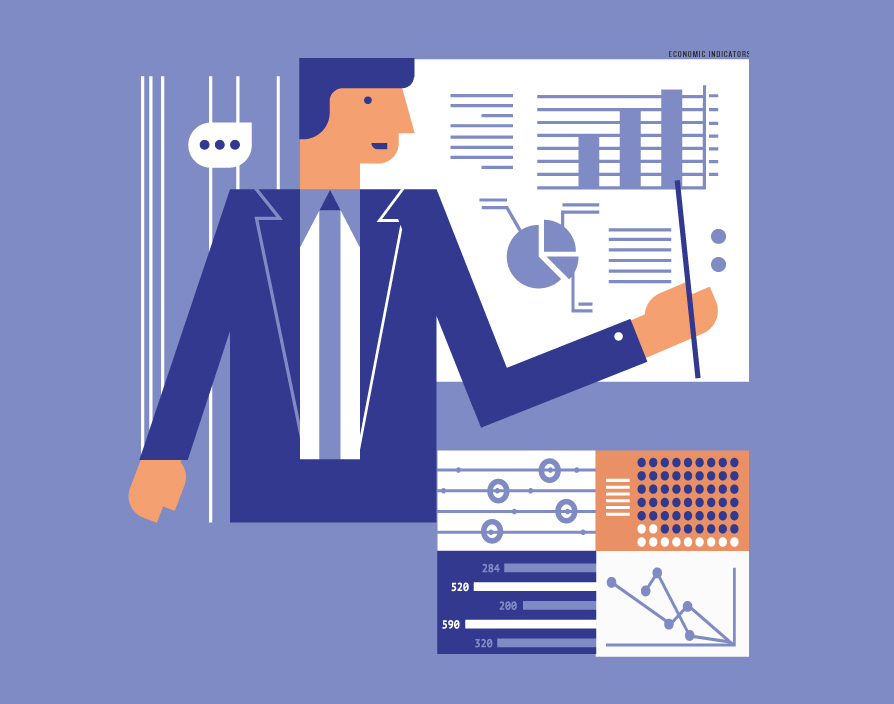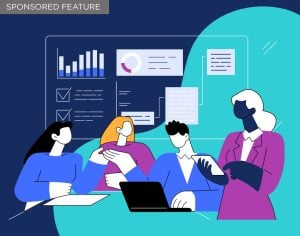“Economic indicators be damned,” says Jon Medved, founder of OurCrowd, the equity crowdfunding platform built for accredited VC investors. “If startups have half a brain, they don’t make decisions entirely based on what a pundit thinks.” You can’t blame the man. Most entrepreneurs are used to a barrage of economic indicators landing on their desks each day, many of which appear conflicting or aren’t quite what they seem.
Take consumer confidence – the marker many startups look to when making strategic decisions because it indicates how willing people are to spend. When strong post-Brexit vote consumer confidence figures came in – supported by positive retail footfall stats – it seemed that people were cautiously optimistic that things wouldn’t be so bad after all. But despite the rosy headlines, consumers are starting to get a bit more jittery now that the job market is showing signs of weakness.
Perhaps the initial positivity was down to the fact that bad news takes longer to sink in for consumers or it may have been the case that people were simply splashing out on fans to cope with the summer heatwave. Unemployment statistics can be equally perplexing. While some might cheer at the recent fall in unemployment, employment also dropped – most likely because fewer people were actually seeking jobs because they’ve retired, for example. So there’s clearly a danger of misreading the signs.
To begin to take anything meaningful away from the headlines, startups need to follow a trail of clues in the form of indicators like unemployment, retail sales or inflation to see the bigger picture, rather than cherry picking a few in isolation. “There is a preoccupation with the latest GDP statistics but they can be quite volatile,” says Andrew Sentance, senior economic adviser at PwC, the professional-services network. “Startups should be worried about consumer confidence.” While the metric is imperfect, Sentance feels it’s still a useful indicator because so many other factors – like people’s purchasing power and their levels of employment – feed into it. Which is perhaps why we’re only now starting to see consumers reacting to the recent economic instability. “What’s been driving consumer confidence is low inflation, which won’t last,” Sentance warns.
Startups trying to figure out what’s really going on are also augmenting macro indicators with the swathes of data they’re privy to. UNiDAYS, the global company that offers price-conscious students discounts on popular brands, combines its own data on consumer buying patterns with exchange-rate data and consumer-confidence figures to make strategic decisions. For instance, when a shift in the exchange rate between the pound and the Australian dollar made British imports more expensive, the company changed tack by promoting Aussie retailers instead – and enjoyed a surge in sales as a result. “It’s important to listen to the signals and adapt to shifting economic conditions; you can’t blindly follow the same strategy,” says Josh Rathour, the company’s CEO and founder. “If we’d ignored what the indicators were telling us in Australia, we would have become irrelevant,” he adds.
It’s also important to keep an eye on what’s happening externally to make sure you don’t run into cashflow problems. “When orders get delayed because of a sense of risk, whether it’s real or perceived, it makes small businesses vulnerable to cashflow problems,” says Sentance. “We won’t actually see the effects of Brexit until the 2020s but in the interim it’s the uncertainty and confidence blows that are the biggest risk to small businesses because it delays orders so a business has fewer funds available to them.” But startups that have an early warning of potential problems are able to provide themselves with a little cushioning, whether it’s by freezing recruitment or accessing credit.
But while processing the data, there’s a danger of becoming too myopic by focusing purely on trends at home. “It’s not all doom and gloom around the world and startups can buck any short-term issues in the UK market by looking globally,” says Rathour. Since the Brexit vote, for instance, the entrepreneur has seen UNiDAYS’ partners invest more in opportunities across the pond in the US. Now that made-in-Britain clothes are slightly cheaper thanks to the lower pound, they’re witnessing even more demand. Meanwhile, Medved believes that startups tend to have a global customer base anyway so they’re not catastrophically affected by the fluctuations in domestic economic data.
Perhaps that’s why so many appear to be feeling upbeat. According to the recent Aldermore SME Future Attitudes report, 82% of SMEs are optimistic about their business performance in 2017 and a large percentage expect their revenue to grow. There’s also the fact that in a world where Brexit and Trump have left many pundits red-faced, some skepticism of expert opinion is setting in. “‘The word ‘pundit’ is almost a synonym for clueless so I’m not sure I’d want to believe what a pundit has to say,” says Medved. “Nobody can really tell you what’s going to happen in the overall economy.”
But Sentance still believes caution is in order. “It’s important that startups don’t get caught up in any sort of euphoria or make overly optimistic assumptions,” he says. “You’ve got to be conservative.” So when the director general of the British Chambers of Commerce warns of “a bumpy road ahead” and slower GDP growth, it may be worth startups heeding his warning and applying that pinch of salt to the rim of a tequila shot instead.
However while some indicators are of value, startups are rarely put off by doomsayers and it’s for this reason that Medved describes himself as “mildly bullish” about Britain’s future. “Entrepreneurs don’t accept the odds: we believe in miracles and magic,” he says. “You don’t start a business because you read from a pundit that GDP growth is going to go up. We couldn’t care less.” Instead, Medved believes most startups are concerned with a mixture of sector-specific indicators and long-term metatrends, which he says look “maybe ten times further ahead than economic forecasts”.
So is it perhaps time we added a few extra indicators in there, like innovation indexes? “If you look at the innovation cycle, we’re in the midst of a huge boom and, with technology like big data, the cloud and the internet of things, every industry has been or is about to be disrupted,” says Medved. “If you look at that stuff, how are you anything but bullish?” ![]()
Share via:


















































